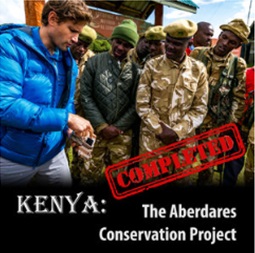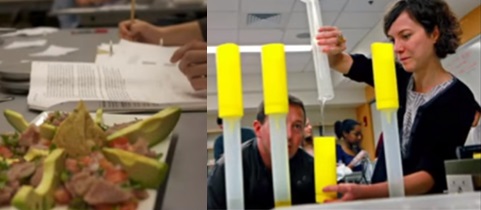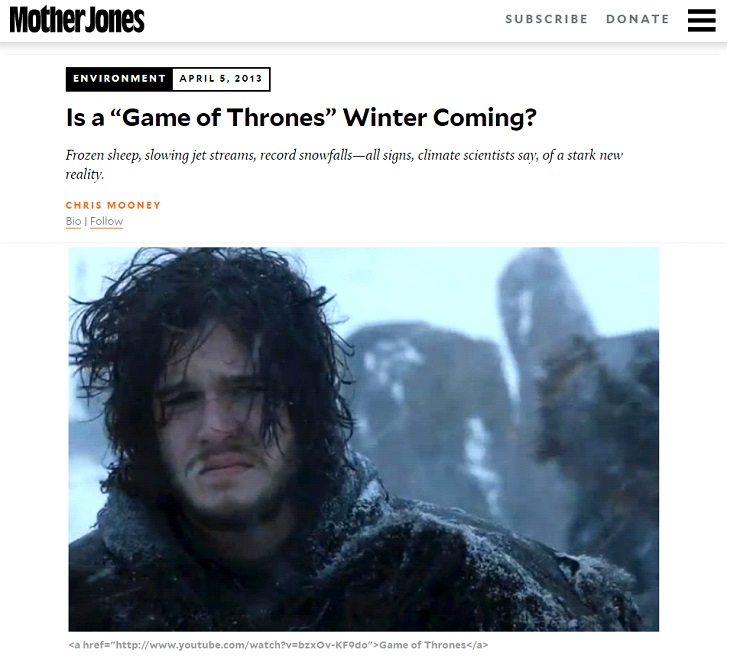Article written by Eli Typhina and Sarah Gregory
What do Nobel winners do more of than general scientists? Hobbies, as stated in a study by Root-Bernstein et al. (2008) that found Nobel winners typically had more hobbies than general scientists and that winners described their hobbies as avenues to explore, develop, and actualize their scientific research. Not only do hobbies spark personal innovation, but they also welcome non-scientists to research in fun and inspiring ways (Kurtz, 2015). The following stories offer inspiration for how scientists can use their non-scientific interests to enrich their research agenda and pique the interests of people who may have otherwise not sought out their research.
Scientist Simon Donato created the non-profit Adventure Science™ by combining his love of ultra-endurance fitness and travel with his research on geology, anthropology, biology, and geography. His non-profit pairs athletes with researchers to assist with research projects, such as archaeological surveys and deploying motion sensing camera traps to track poachers (Figure 1). Athletes can engage in local research as well, Rodenburg (2020) encourages runners to seek out research projects, such as citizen science projects, where they can utilize their data-driven mind-set and running locations to help conserve or document the places they love. Finally, scientists can also use sports as a way for others to embody and understand their research, such as the work of Donaldson and Hammrich (2016) who found that students who learned about science and math through sports, such as golf, tennis, fencing, or basketball, understand those concepts better than through traditional pedagogical approaches.
Figure 1. A thumbnail from Adventure Science™’s website showing participants of the Aberdares Conservation Project, a project where athletes deployed camera traps to help local law enforcement monitor illegal harvesting and poaching.
Not everyone can call themselves an athlete, but we can all relate to food! Food captivates people’s attention and provides a tactile way for anyone to engage in scientific inquiry (Rowat, 2013). Scientist Amy Rowat (Glenn, 2010) combined her passion for cooking with her physics research to create a Harvard University course for non-science majors that taught soft-matter science concepts, such as viscosity, elasticity, and diffusion, through guest lectures from chefs and assignments students could eat. She also created a course where students learned the molecular aspects of food, such as their cells and phase transitions, by sampling and comparing the texture and flavor of various foods (Rowat, 2013) (Figure 2). For example, during one of Rawat’s course activities, participants compared the taste of milk and dark chocolates to learn the effects of molecular composition on phase behavior. Through food, scientists enable others to learn scientific concepts through their eyes, ears, and taste buds.
Figure 2. Images from Amy Rowat’s TEDxUCLA talk depicting her courses that merge science with food (Rowat, 2012).
Scientists love setting trends, like offering new research methods and innovative materials, but what about societal trends? Block-buster films, popular video games, political satires, or trendy clothes can offer pop-culture trends that pair well with scientific trends. For example, scientist Arun Chandrasekaran (2021) includes popular culture references in his teaching and publications on structural DNA nanotechnology because it affords “common ground to contextualize science” that can “hook the reader” in a way not possible through traditional scientific communication. He mentions how other researchers have shown the movie October Sky to discuss propellant systems, Apollo 13 to explore carbon dioxide filters, and Jurassic Park to contextualize molecular biology and cloning. Besides using popular culture trends as metaphors, scientists can use them to inspire new research projects. Scientist Manjana Milkoreit (2019) noticed how when non-scientists used scenes from the ‘Game of Thrones’ TV series to discuss climate change, they could generate multiple potential political outcomes that went beyond entrenched worldviews and party affiliations (p. 80) (Figure 3). Inspired by the way pop-culture fiction could ignite non-scientists’ imagination, Milkoreit developed the Imagination and Climate Futures Initiative (Judd, 2017). The initiative brings together scientists and non-scientists to develop new solutions to climate change through use of imagination in storytelling and art.
Figure 3. This screen capture from Chris Mooney’s article “Is a ‘Game of Thrones’ Winter Coming” demonstrates Milkoreit’s (2019) research, specifically the ways in which pop-culture references to the Game of Thrones makes climate change issues relatable to non-scientists.
From sports, travel, cooking, and pop-culture, scientists can act like a boss Nobel Prize winner by using their hobbies to make their research accessible to new audiences. Start this marvelous merger by brainstorming with:
- Friends who share your hobbies. They know your quirks and can give personalized feedback on how you can use your foodie palette to drive your research to the next level
- Local experts with similar interests.Whether they be popular restaurant chiefs, fashion designers, or gym owners in your city, these folks might turn out to be the perfect collaborators for developing research materials that make a difference.
- Colleagues from different disciplines. Scientist Alexa Lamm (2022) stated that colleagues from different disciplines understand the research genre and they can offer the perspective of someone outside of your field. Bonus: They might join and/or learn with you on your alternative sci-com journey.
- Scientists who pair their hobbies and research. We mentioned a number of amazing scientists in this article, but you can find many more by exploring Twitter and YouTube.
Once you have your hobby-research pairing in mind, consider polishing your unique messages with professional science communicators such as:
- Compass: A non-profit that helps scientists craft op-eds, pitches, media kits, and hone their unique communications through collaborative workshops with a starting cost of $4,000.
- Helicase Media: A company that offers scientists communications workshops starting at $500 and video abstracts starting at $2,000.
- STEMedia: An edtech and media production company that offers courses and creates custom video content on STEM topics, with diverse representation, for projects as low as $4,500.
In conclusion, hobbies not only boost scientists’ productivity and innovation, as explained by Julia Rosen (2018), but as one can see through the stories mentioned in this article – hobbies enable non-scientists to see into a world they may not otherwise explore. So, what are you waiting for? Take a break from your pipettes and statistics to chat with your rock climbing club about the effects of invasive species on climbing terrain or challenge your students to work with the local recycling company to develop unique, wearable designs.
References
Chandrasekaran, A. R. (3 Mar 2021). Pop-culture references in peer-reviewed scientific articles. Matter, 4(3), 759–760. https://doi.org/https://doi.org/10.1016/j.matt.2021.02.009
Donaldson, J. P., & Hammrich, P. L. (2016). Sports as a Creative Way to Teach Science. International Journal of Curriculum and Instruction, 8(2), 64-72. Retrieved from: https://files.eric.ed.gov/fulltext/EJ1207312.pdf
Glenn, D. (14 Nov 2010). Cook Up a Science Course, and Students Will Devour the Lessons. The Chronicle of Higher Education. Retrieved from: https://www.chronicle.com/article/cook-up-a-science-course-and-students-will-devour-the-lessons/
Judd, W. (14 Jun 2017). Has ‘Game of Thrones’ affected the way people think about climate change? Pacific Standard. Retrieved from: https://psmag.com/social-justice/no-when-cares-when-winter-is-coming
Kurtz, J. (15 Sept 2015). Six reasons to get a hobby: You’re really not too busy. Psychology Today. Retrieved from: https://www.psychologytoday.com/us/blog/happy-trails/201509/six-reasons-get-hobby
Milkoreit, M. (2019). Pop-cultural mobilization: deploying Game of Thrones to shift US climate change politics. International Journal of Politics, Culture, and Society, 32(1), 61-82. https://doi.org/10.1007/s10767-017-9273-7
Rodenburg, M. (23 Sep 2020). How Runners Can Join the Citizen Science Movement. Women’s Running. Retrieved from: https://www.womensrunning.com/culture/runners-do-citizen-science/
Root-Bernstein, R., Allen, L., Beach, L., Bhadula, R., Fast, J., Hosey, C., … & Weinlander, S. (2008). Arts foster scientific success: avocations of nobel, national academy, royal society, and sigma xi members. Journal of Psychology of Science and Technology, 1(2), 51-63. https://www.psychologytoday.com/files/attachments/1035/arts-foster-scientific-success.pdf
Rosen, J. 18 June 2018. How a hobby can boost researchers’ productivity and creativity. Retrieved from: https://www.nature.com/articles/d41586-018-05449-7
Rowat, A. C. (9 Jan 2013). The molecules we eat: Food as a medium to communicate science. Flavour, 2(1), 1-4. Retrieved from: https://flavourjournal.biomedcentral.com/articles/10.1186/2044-7248-2-10
Rowat, A. (13 Dec 2012). The molecules we eat. TEDxUCLA. Retrieved from: https://www.youtube.com/watch?v=dsUrVE11wFk&t=187s
Acknowledgements
We would like to thank the NC State University Office of Undergraduate Research for funding assistance, as well as these science communicators who inspired this article:


